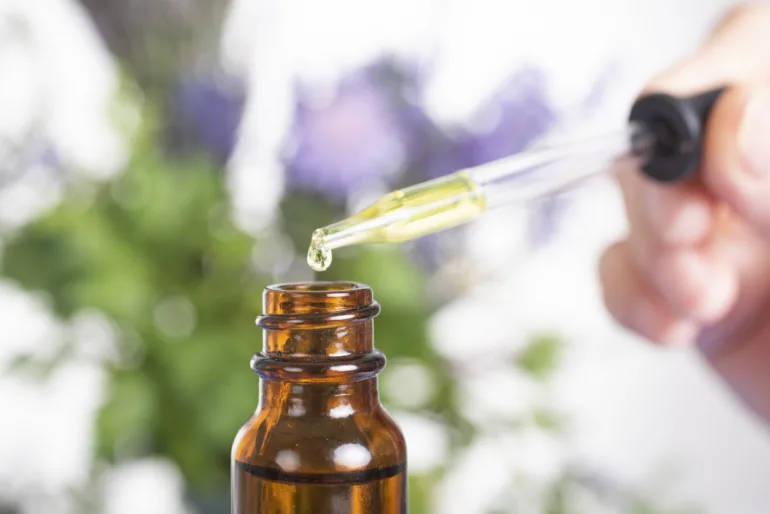Yeast infections. Those pesky little nuisances that tend to pop up in the most inopportune places and at the most inopportune times – just when you’ve had a weekend at the spa or are wearing your favorite pair of tight pants. While they’re not life-threatening, they’re certainly socially awkward and, at best, extremely itchy. They’re caused by various types of fungi that like to hang out in warm, moist, and dark corners of the body. Hot and humid weather, wearing sweaty clothes, stress, poor hygiene, or a weakened immune system – these are all bingo cards for developing a yeast infection.
Although more severe or chronic fungal infections treated with prescription medications, can Milder forms of fungal infections can also be successfully controlled with natural preparations. Domestic pharmacy It has more power than you might think—and without the side effects or long lists of ingredients you can't pronounce. Here are seven proven, effective, and skin-friendly natural solutions that work—if nothing else, at least as well as advice from a grandmother who's "seen it all."
7 Natural Solutions for Fungal Infections and Ringworm
Aloe vera: a natural balm for irritated skin
Aloe vera is almost a cult star in natural cosmetics. This succulent plant is not only known for healing sunburns, but also for its antiseptic and antifungal propertiesWhen applied to the infected area, it has a cooling effect, relieves itching, and prevents the spread of infection.
Ingridients:
- Pure aloe vera gel (preferably from the plant, but you can also buy it – just make sure it contains at least 95% aloe)
Process:
- Apply the gel directly to the affected area twice a day, morning and evening.
- Do not rinse, let it soak in. Use daily until symptoms resolve.

Turmeric: the yellow power from the herbal shelf
Turmeric is not only a spice that colors curries and fingers, but also powerful natural antiseptic and fungicideIt contains curcumin, a compound responsible for its anti-inflammatory and antimicrobial properties. When diluted in water, turmeric can create an effective natural solution for washing infected areas of the skin.
Ingridients:
- 1 teaspoon turmeric
- 1 cup of water
Process:
- Mix turmeric with water and use the resulting mixture as a rinse while showering.
- After a few minutes, rinse with clean water. Repeat the process every day.
Be warned – the skin may temporarily turn slightly yellow, but don't let that deter you. Turmeric works wonders even where pharmaceuticals sometimes give up.

Coconut oil: a natural fat against fungal chaos
Coconut oil is not only a fragrant addition to baking cookies, but also strong antifungal agent, rich in lauric and caprylic acids. These acids help break down the cell walls of the fungus, thereby destroying the infection.
Ingridients:
- 1–2 teaspoons organic, cold-pressed coconut oil
Process:
- Apply the oil to the affected area and allow it to absorb completely.
- Use 2–3 times a day until itching and redness subside.
Bonus: your skin will be as soft as after a luxurious spa treatment.

Apple cider vinegar: an acid that can be a friend
Although the smell may be a bit off-putting, it is Apple cider vinegar is a powerful antifungal agent., which stops the reproduction of fungi and restores the skin's natural pH balance. It acts as a natural fungistatic, meaning it prevents the growth of fungi without drying out or irritating the skin.
Ingridients:
- 1 teaspoon of apple cider vinegar
- 1 cup of water
Process:
- Dilute the vinegar with water and apply the mixture to the infected area using a cotton ball.
- Leave on for 15 minutes, then rinse with water. Repeat daily.
If the smell bothers you – this is not the time for perfume, but for an effective solution to the skin war.

Tea tree essential oil: a drop of miracle
It is tea tree oil natural antiseptic, antibacterial and antifungal agent in oneDue to its high concentration of terpinen-4-ol, it is particularly effective against the types of fungi that cause ringworm and athlete's foot.
Ingridients:
- 2 teaspoons coconut oil
- 3–4 drops of tea tree essential oil
Process:
- Mix the oils and apply to the infected area. Allow to absorb.
- Use once daily until symptoms disappear.
Important: never apply undiluted tea tree oil directly to the skin as it can cause irritation!

Neem: An Ayurvedic Secret from Indian Gardens
Neem It is one of the most powerful traditional medicines, known in Ayurveda for centuries. Its antifungal and antibacterial properties are ideal for treating skin infections, especially in persistent or recurring cases.
Ingridients:
- A handful of fresh (or dried) neem leaves
- Water
Process:
- Boil the leaves in water for 10 minutes and let the mixture cool.
- Then use it to rinse the infected areas or add it to your bath. Repeat every day.
The result? Clear skin, no irritation, and a feeling like you just stepped out of an Ayurvedic retreat center.

Ginger: internal defense with a spicy character
Ginger, often overlooked in the fight against skin problems, works from the inside outIts antifungal properties strengthen the immune system and help inhibit the growth of fungi in the body. And it's warming!
Ingridients:
- 1 teaspoon freshly grated ginger
- 1 cup of water
- (optional) lemon juice and honey
Process:
- Boil water with ginger, strain and add lemon juice or honey.
- Drink daily as a tea for immunity and against internal fungal infections.

Conclusion: When your skin speaks, listen – but armed with nature
Natural remedies are not always as fast as pharmaceuticals, but they often are. gentler, smarter and kinder to your skin in the long runIf the fungus persists or worsens, of course, see a dermatologist. For milder forms, sometimes it's enough to open your kitchen cabinet or essential oil stash.






